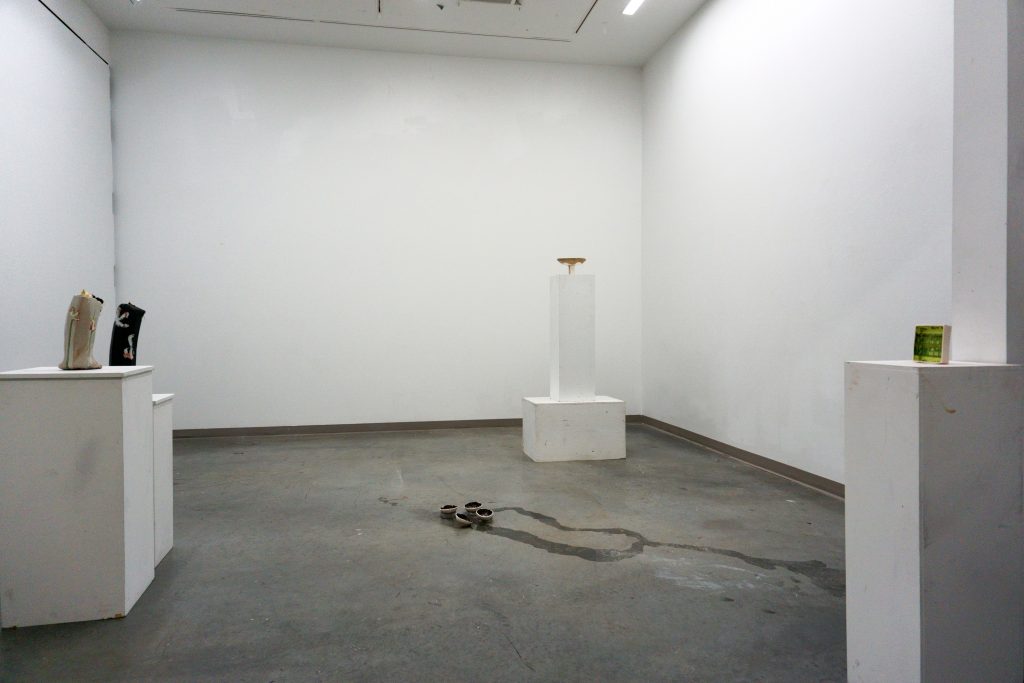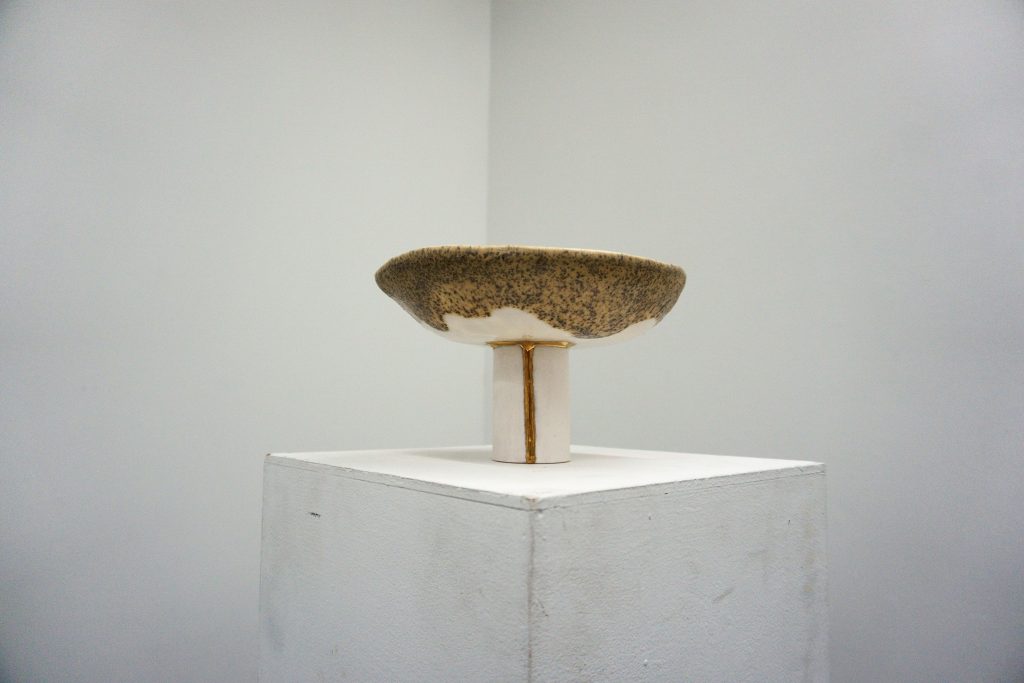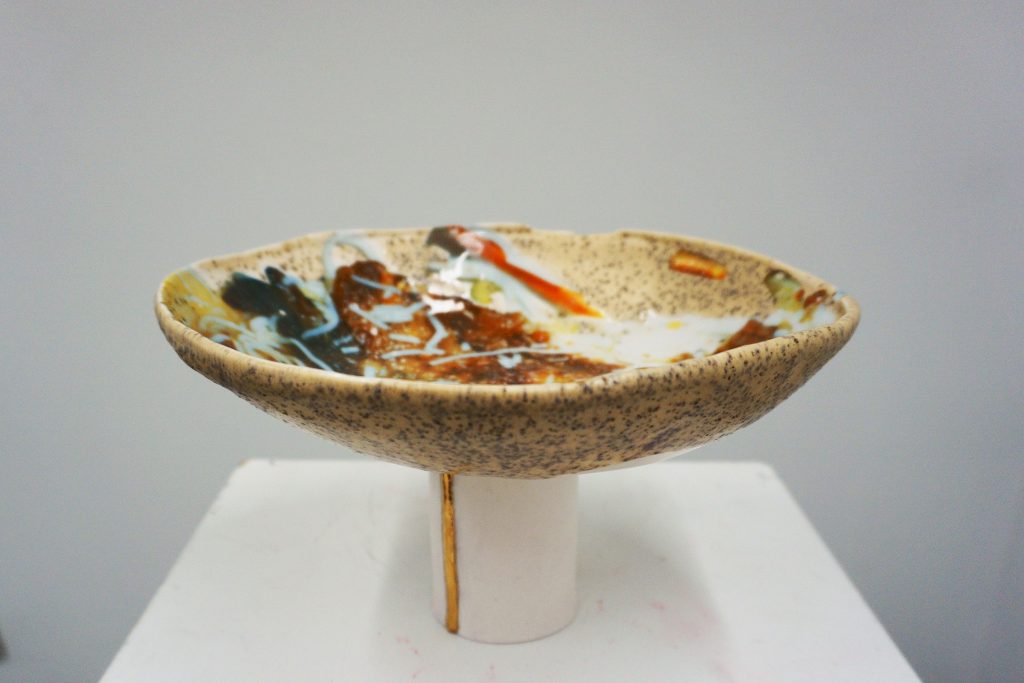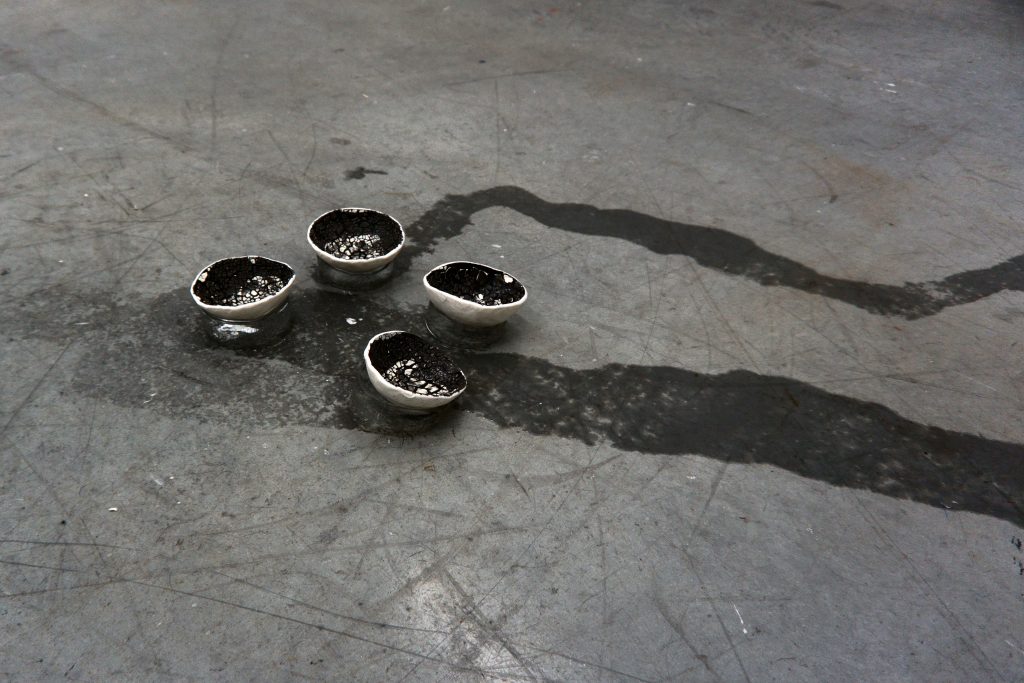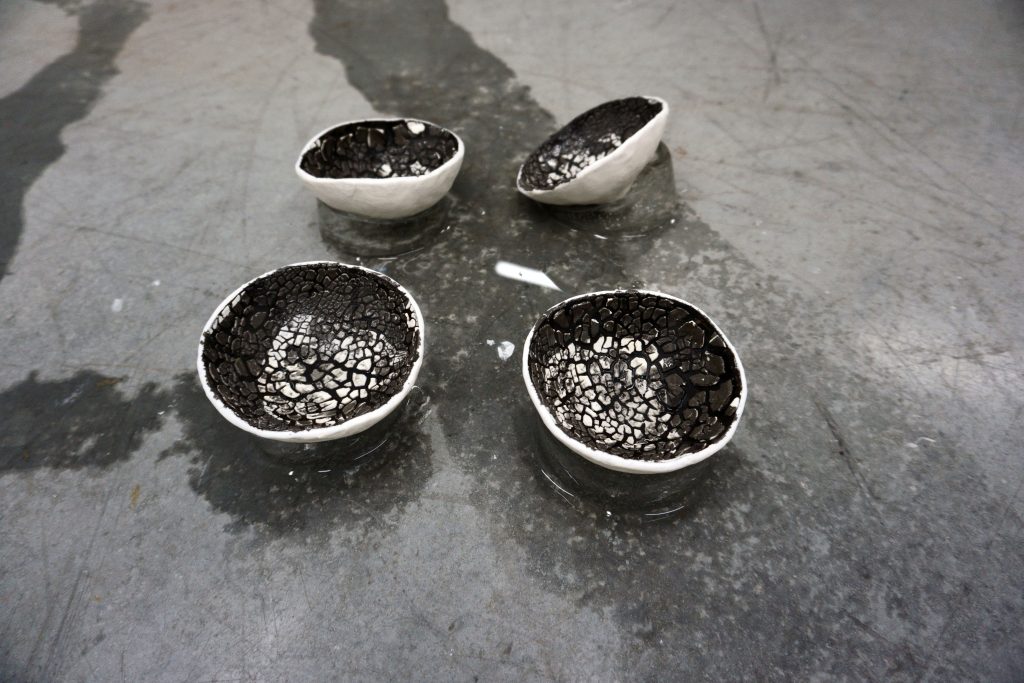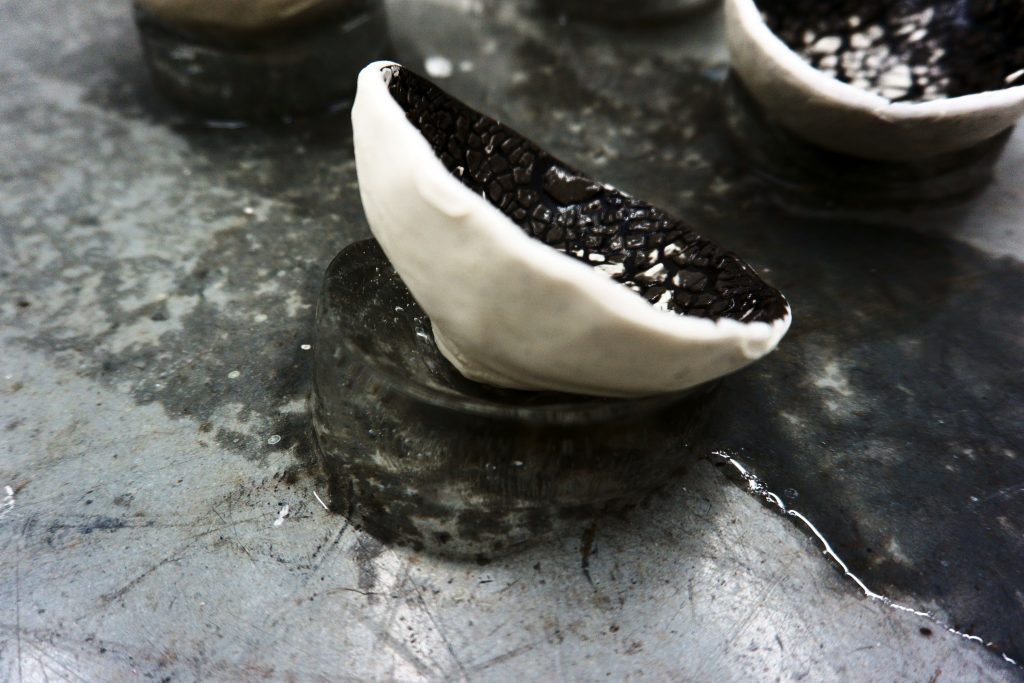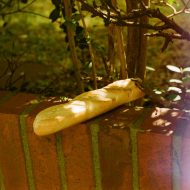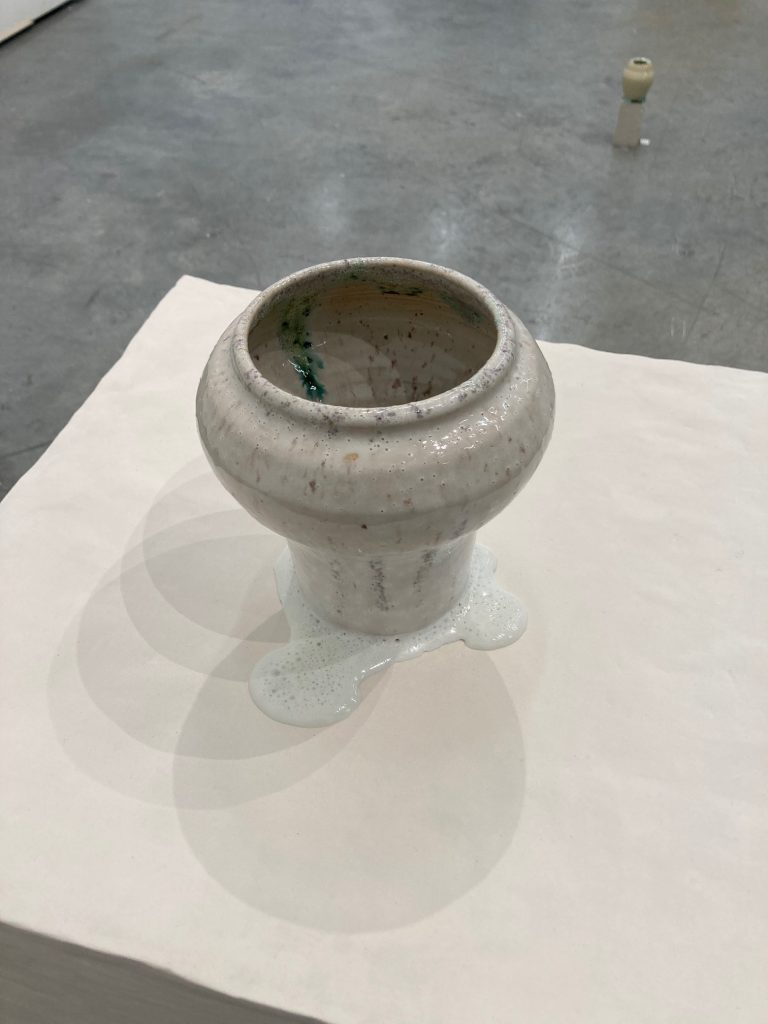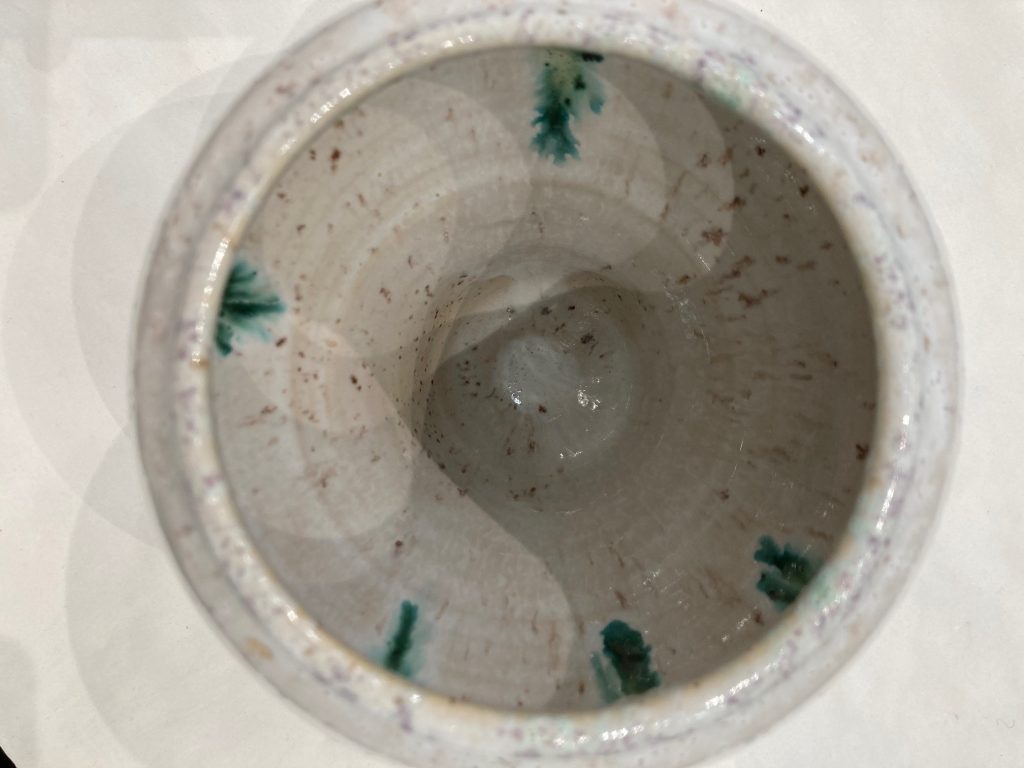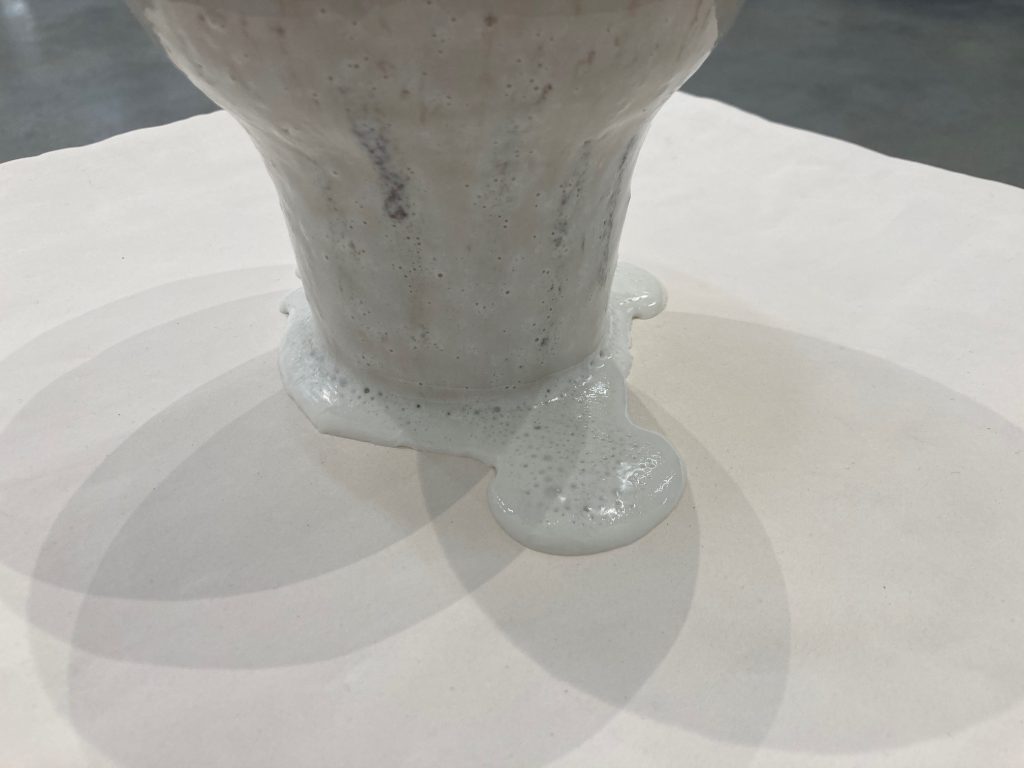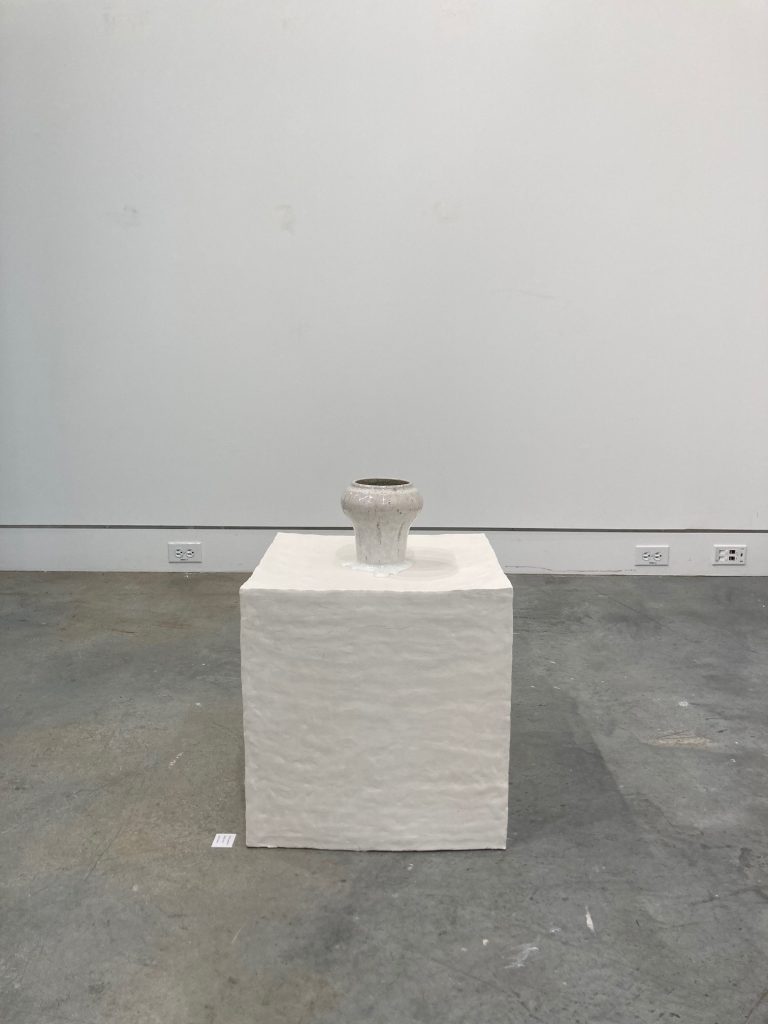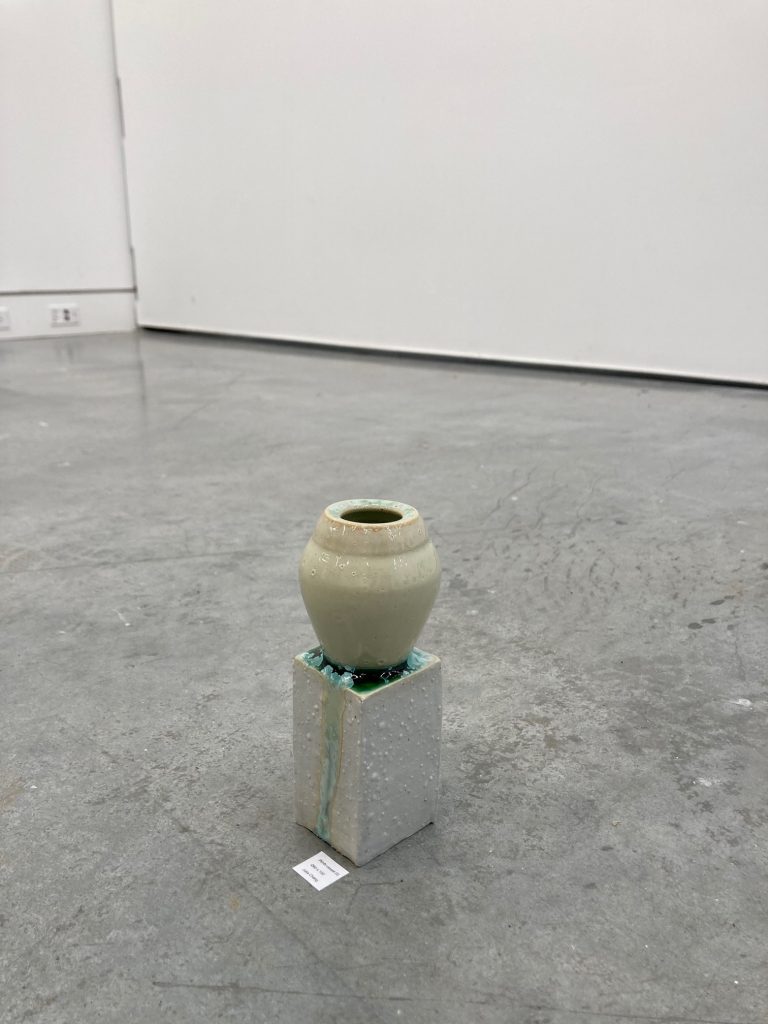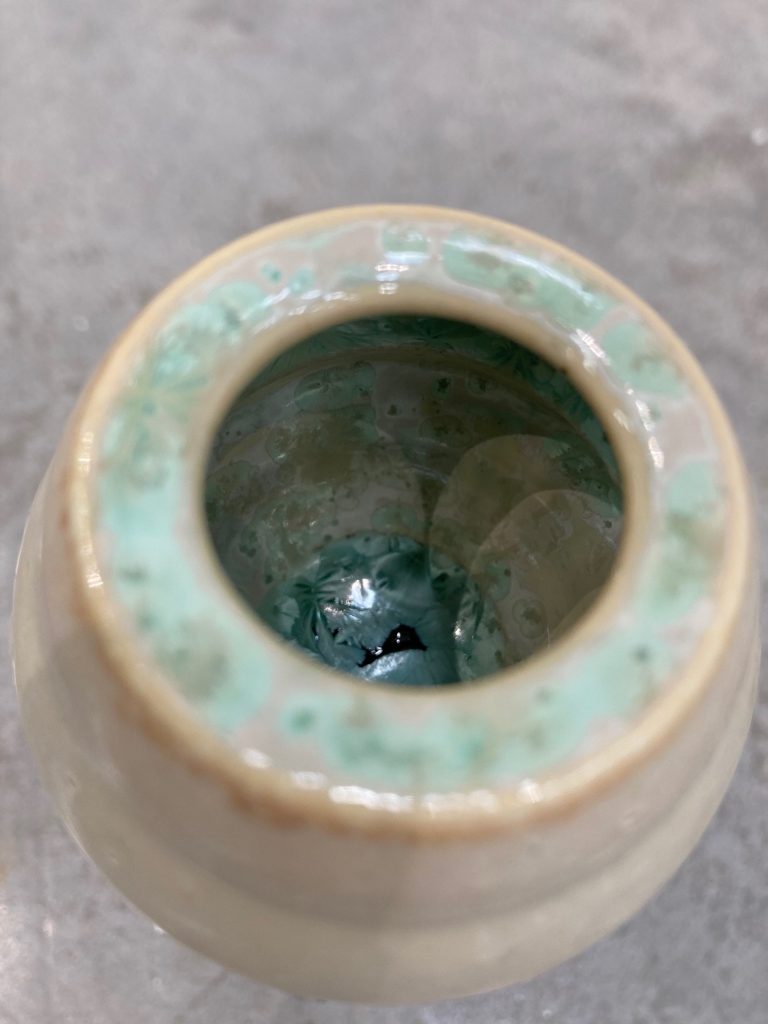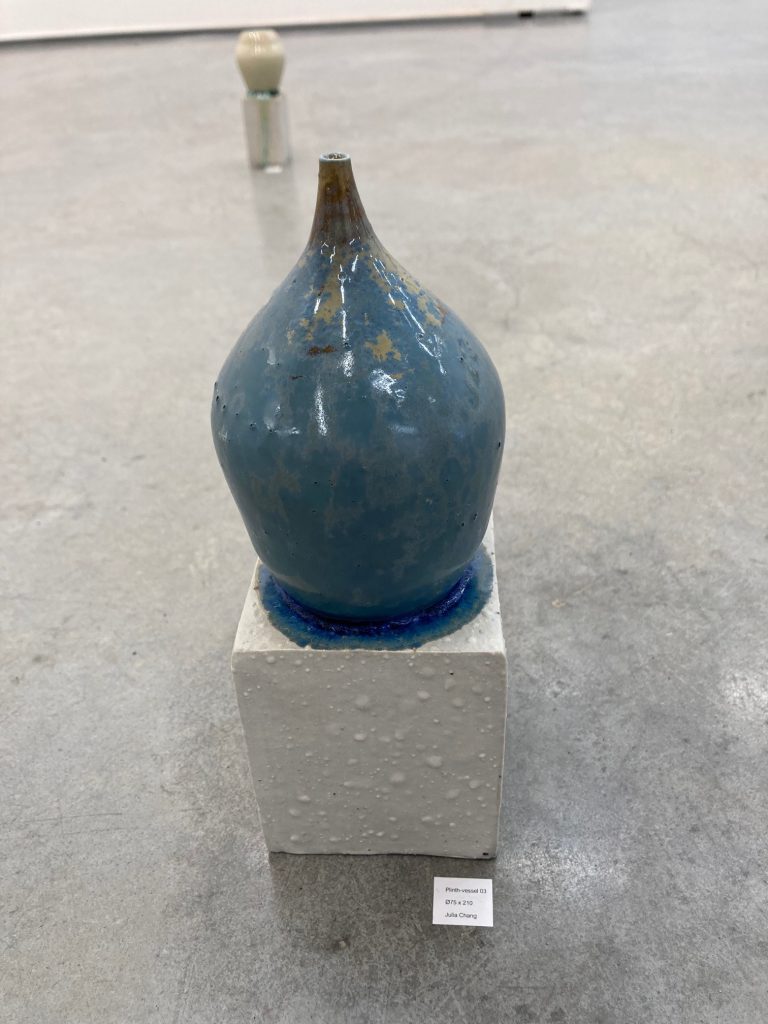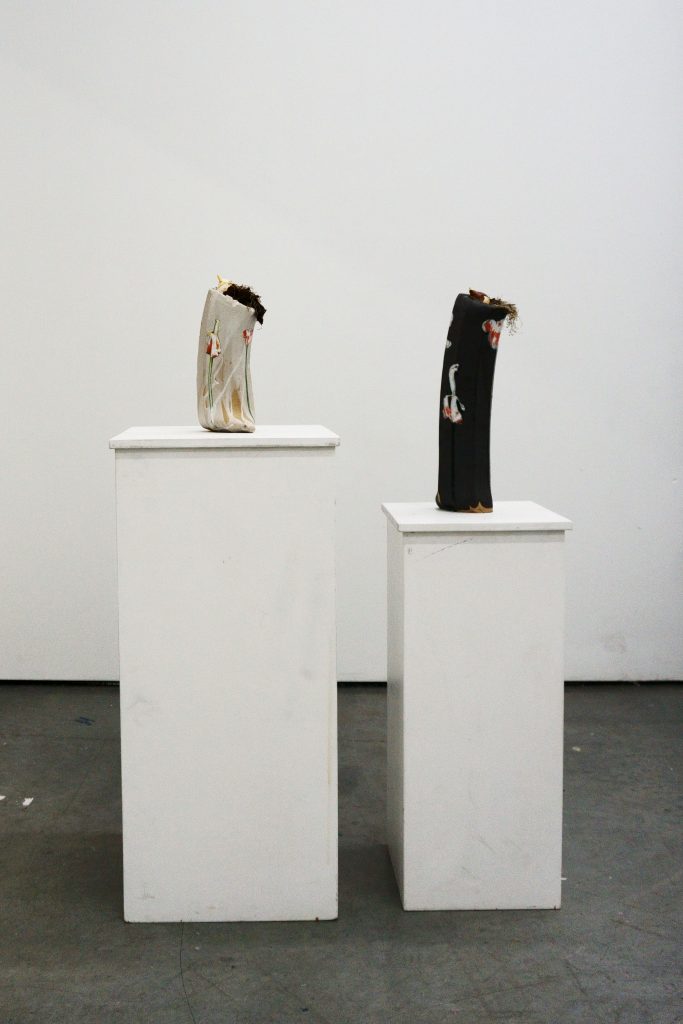My work this semester is based on questioning the relationship between object and plinth; a removal of the object from its context through the promise of visibility and an anticipation of temporality to the relationship. I wanted to also explore the glazes’ dimensionality beyond being seen as a surface material, as having substance and can become valuable in indicating the object-plinth relationship that is now made permanent through the materiality of clay, where both parts are extensions of each other.
Spring 2021 photo documentation – plinth-vessels
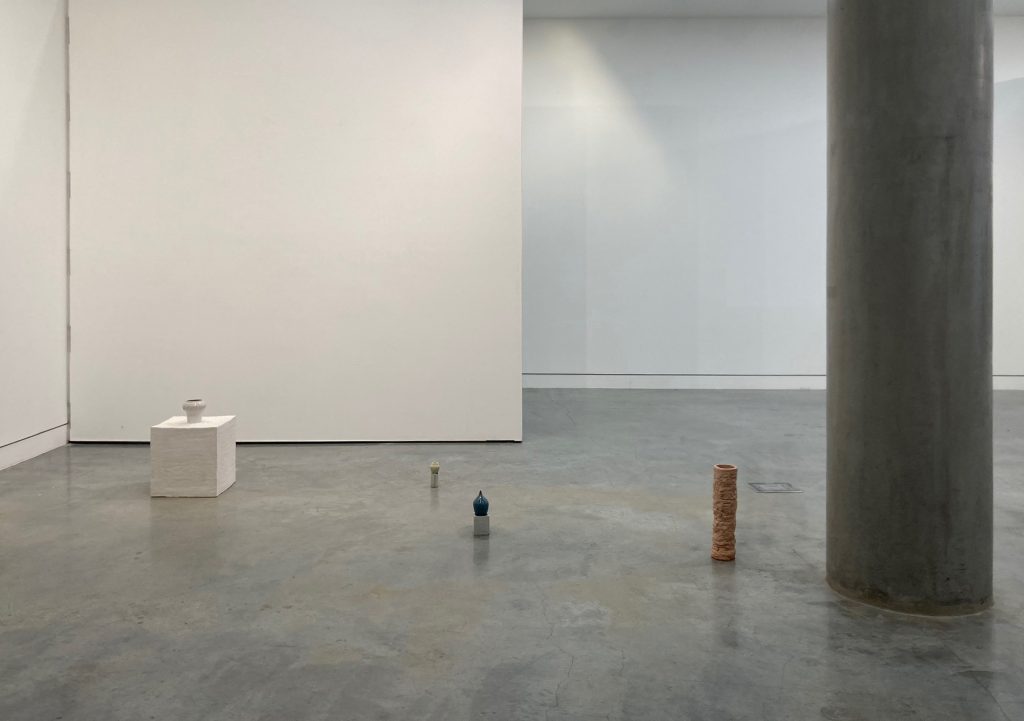
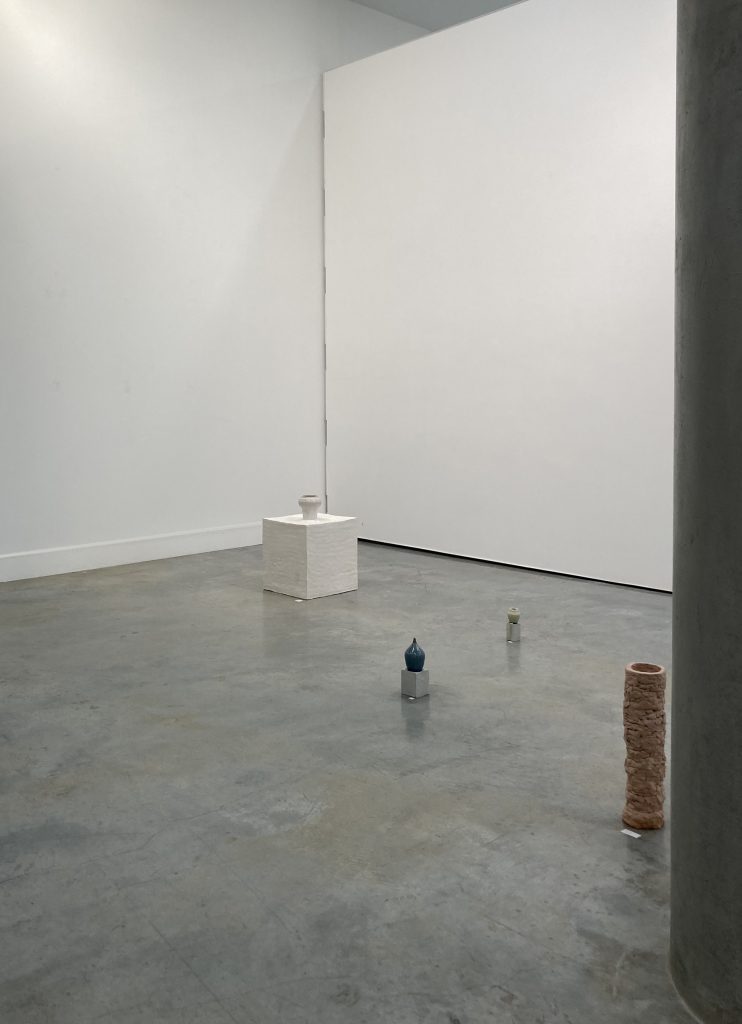
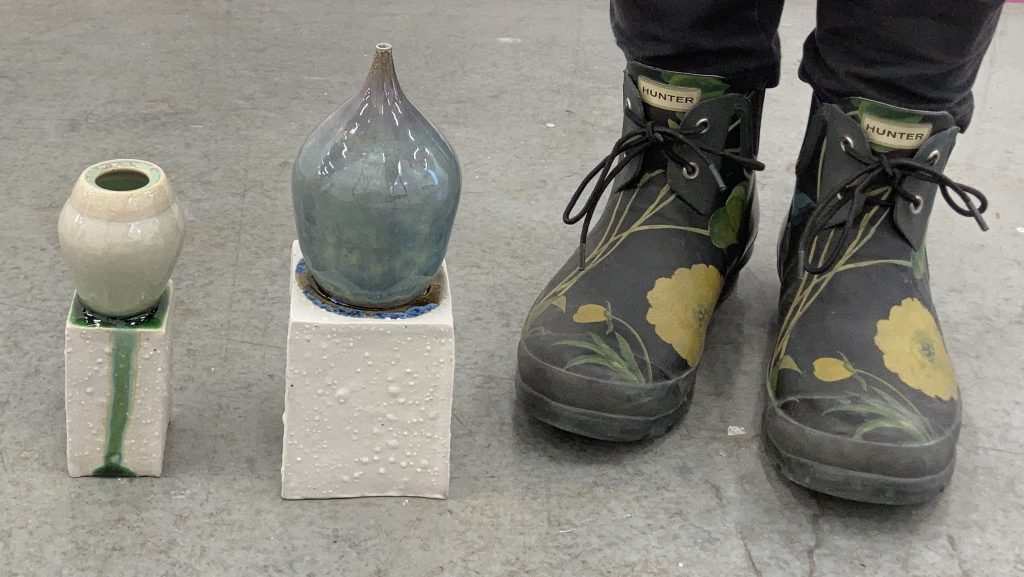
Cone 6 Crystalline glazes
Fabius Blue ^4-5.5
Hirsch Satin Matt Glaze ^02-04


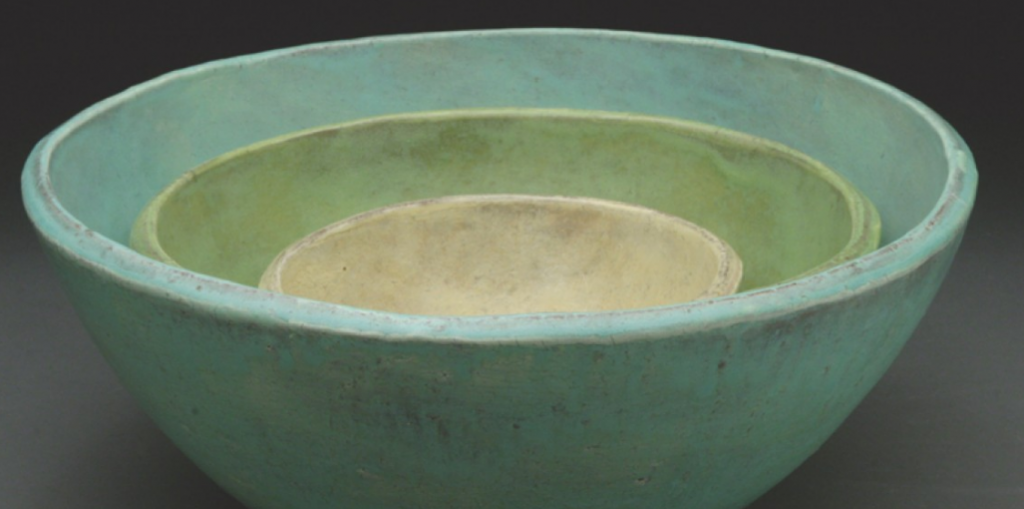
Notes on crystalline glazes
Crystalline glaze recipes contain zinc oxide, silica, and fluxes.
crystals of zinc silicate (Zn2SiO4) are formed.
A window of approx. 72 C (130 F) exists in which to grow crystals.
Crystalline glaze is fired higher than the melting temp. of the glaze, at least 222 C (400 F) hotter. Once this point is reached, the temp. should be quickly reduced to the temp. range for crystal formation, then kept within this range for a predetermined time.
Sequence to promoting crystal formation:
- Getting to max. temp. as quickly as possible.
- Rapidly cooling to the crystal growing range.
- Extendeds oaking, or slowly dropping and raising the temp. within the crystal growing range during the crystal growth period.
- Shutting the kiln off and cooling naturally.
^04 Cenote
https://glazy.org/recipes/89827





Blue-violet overall to violet where the red clay body shows through, ultramarine blue with greenish-gold mottling where thickest. Crazed where very thick. Significant movement.
4 coats brushed on interior of the test bowl. 2 coats on rim. Fired to a hot ^04. Kiln schedule posted.
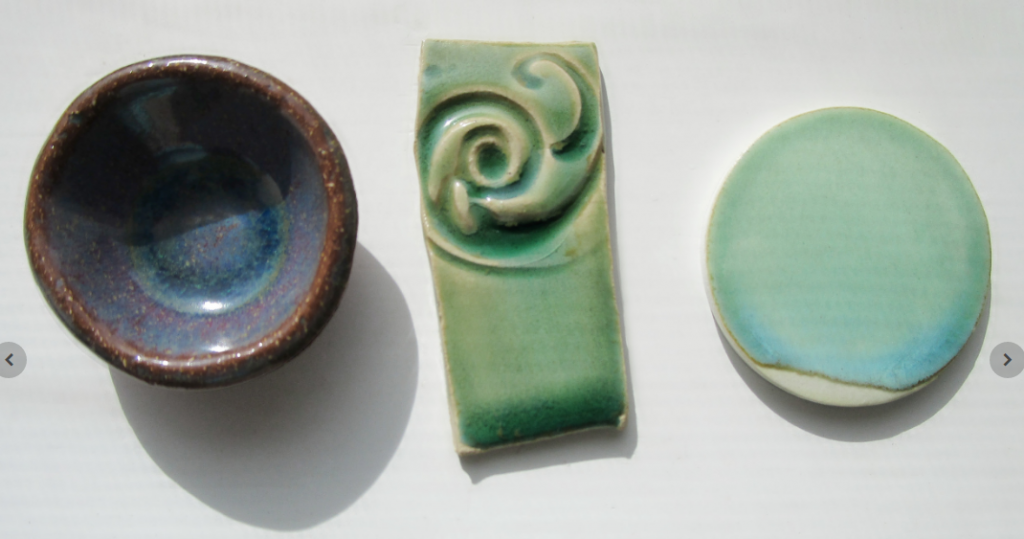
4 coats, brushed, on the two test tiles. Four coats, brushed, on the little test bowl interior, 2 coats on rim. Fired to a hot ^04.
^04 Love Child
https://glazy.org/recipes/81572



^03-04 Glazes for fritware



Fall 2020 – Final crit
